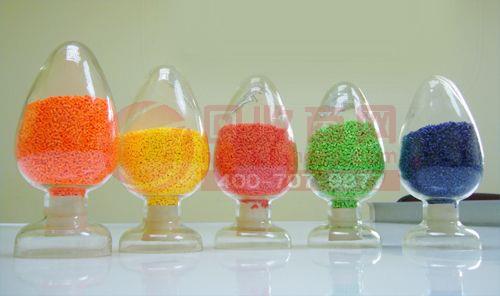
What is crystalline plastic?
Crystalline plastics have a distinct melting point, and the molecules are regularly arranged in solid state. The regular arrangement area is called a crystal area, the disordered arrangement area is called an amorphous area, the percentage of the crystal area is called crystallinity, and the polymer having a crystallinity of 80% or more is called a crystalline plastic. Common crystalline plastics are polyethylene, polypropylene, polyamide (nylon), and PBT resins.
Characteristics of crystalline plastic
The crystallinity and crystalline morphology of the crystalline plastic affect the physical and mechanical properties of the article. If the cooling rate during molding is slow, it is advantageous for the progress of crystallization, and the crystallinity can be improved. Therefore, it is extremely important to obtain an article having excellent mechanical properties and good surface gloss for controlling the mold temperature.
In order to make the cooling rate slow so as to be sufficiently crystallized, it is necessary to increase the mold temperature, but inevitably, the molding cycle is prolonged. The specific volume change of the crystalline plastic near its melting point is large. All materials shrink to some extent during cooling. Generally speaking, crystalline plastics have a higher shrinkage than amorphous plastics. Therefore, the product is liable to be deformed, and the thick-walled product is liable to cause dents, that is, large parts may be warped, and dents may be formed in thick portions.
In short, it is important to consider not only the temperature of the mold but also the fact that the parts of the product must be uniformly cooled and solidified (or uniformly crystallized).
Common crystalline plastic processing technology
(1) Polyethylene
Polyethylene generally has good fluidity during molding. It is almost unnecessary to worry about its thermal stability. However, its molecular orientation is strong, so the product is prone to deformation.
High density polyethylene has a sharp crystallization temperature. In general, higher injection pressures and injection speeds are required. Especially for thick-walled products, the injection speed is very important, it can improve the surface gloss of the product, and prevent the product from warping and reducing the molding shrinkage.
(2) Polypropylene
There are many places in polypropylene similar to polyethylene. The fluidity is proportional to the barrel temperature. However, when the resin starts to age at around 280 °C, it is recommended to control the temperature below 270 °C. The molecular orientation is strong. If it is molded at a lower temperature, it is prone to warp, distortion, etc. due to its molecular orientation, so care must be taken to control the temperature.
(3) POM
Polyoxymethylene (POM) has homopolymers and copolymers, and is a resin which is not very fluid. Such resins are prone to thermal decomposition and care must be taken to control the temperature at which they are formed. The copolymerization of formaldehyde is better than that of homopolyformaldehyde. It can be shaped and processed under slightly higher temperature conditions. However, the residence time of this material in the barrel should not be too long. Otherwise, thermal decomposition will occur to make the product yellow.
(4) Polyamide (nylon)
Polyamide viscosity is extremely sensitive to changes in temperature. Unlike other thermoplastics, nylon has a relatively high melting point. The polyamide is formed at its melting point, so its molding temperature must be higher than that of the general material. Since nylon has a large hygroscopicity, it must be sufficiently dried in advance. However, if it is dried above 90 °C, it will change color, so pay attention.
(5) PBT resin
Both PBT resin (polybutylene terephthalate) and PET (polyethylene terephthalate) belong to saturated polyester (thermoplastic polyester). The PBT resin is characterized by extremely low melt viscosity and good moldability. Because it crystallizes rapidly, it solidifies quickly.
PBT and PET resins are generally more glass fiber reinforced to improve performance. Here, only the molding points of the non-reinforced resin substrate will be described. The heating cylinder is generally 230 to 270 ° C (flame retardant grade is 250 ° C). The mold temperature is 40 to 90 ° C, although it can be molded at a lower mold temperature, a higher mold temperature is preferred for products having a surface gloss. The injection pressure ranges from 50 to 130 MPa. Since the resin solidifies rapidly, the injection speed should be fast, so that the appearance of the product is good and the performance is improved. Further, since the moisture-absorbing resin melts, water decomposition occurs, and the product becomes brittle. Therefore, resin pre-drying is required before processing.
The Emergency Sensor Light is specially designed for ceiling Mounted emergency lighting and with Microwave Sensor. from 12inch 18W to 18inch 36W. Dimmable lighting, Waterproof and Dustproof avialable. Widely using for Office and Household. Automatically light at once when buildings main power outage. It is more than 3 hours emergency time. When Main power is on, it use as an normal sensor lighting
Led Emergency Sensor Light,Emergency Light Sensor,Microwave Sensor Emergency Light,Emergency Sensor Light
Foshan Nai An Lighting Electric Co.,ltd , https://www.fsnaipsled.com
